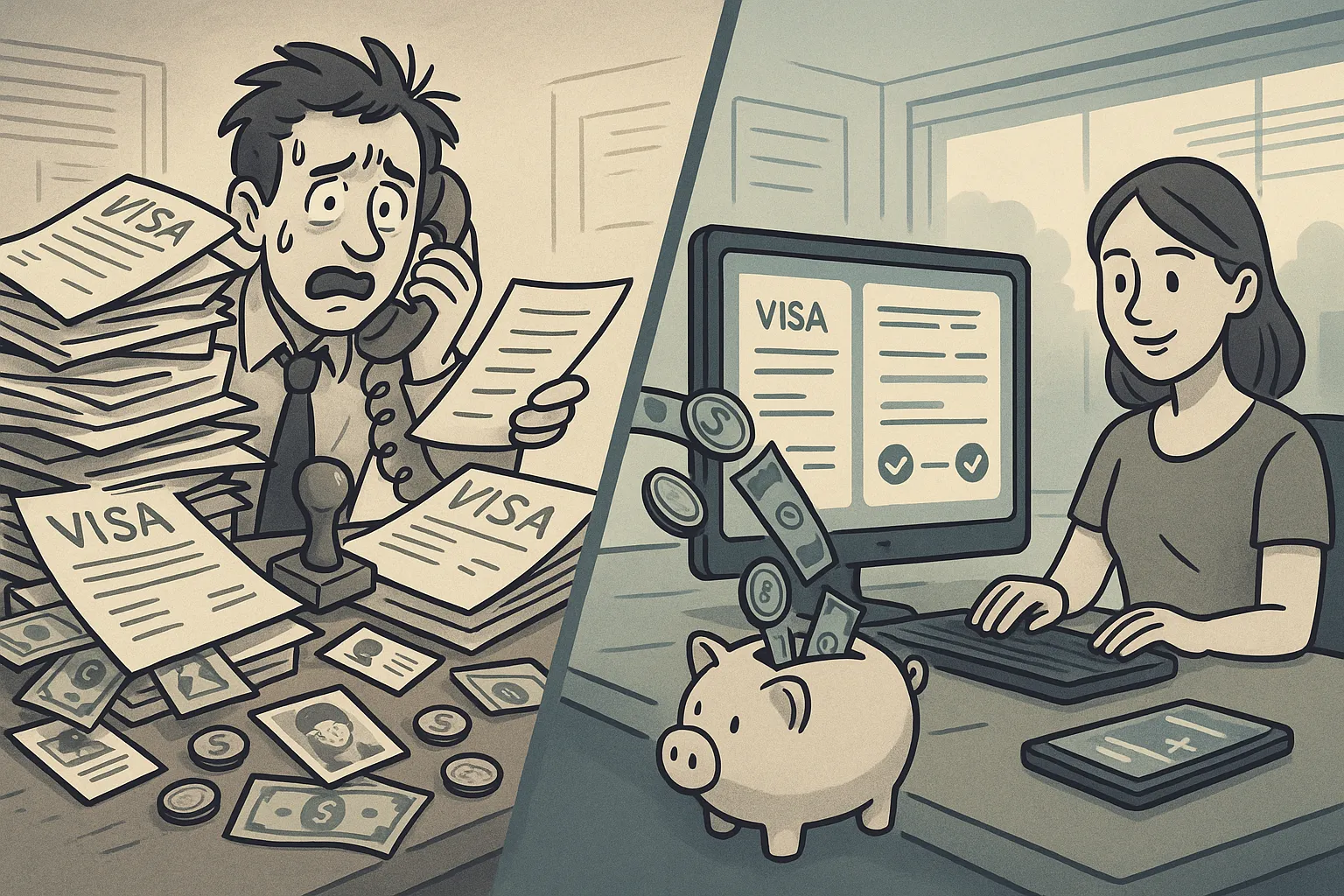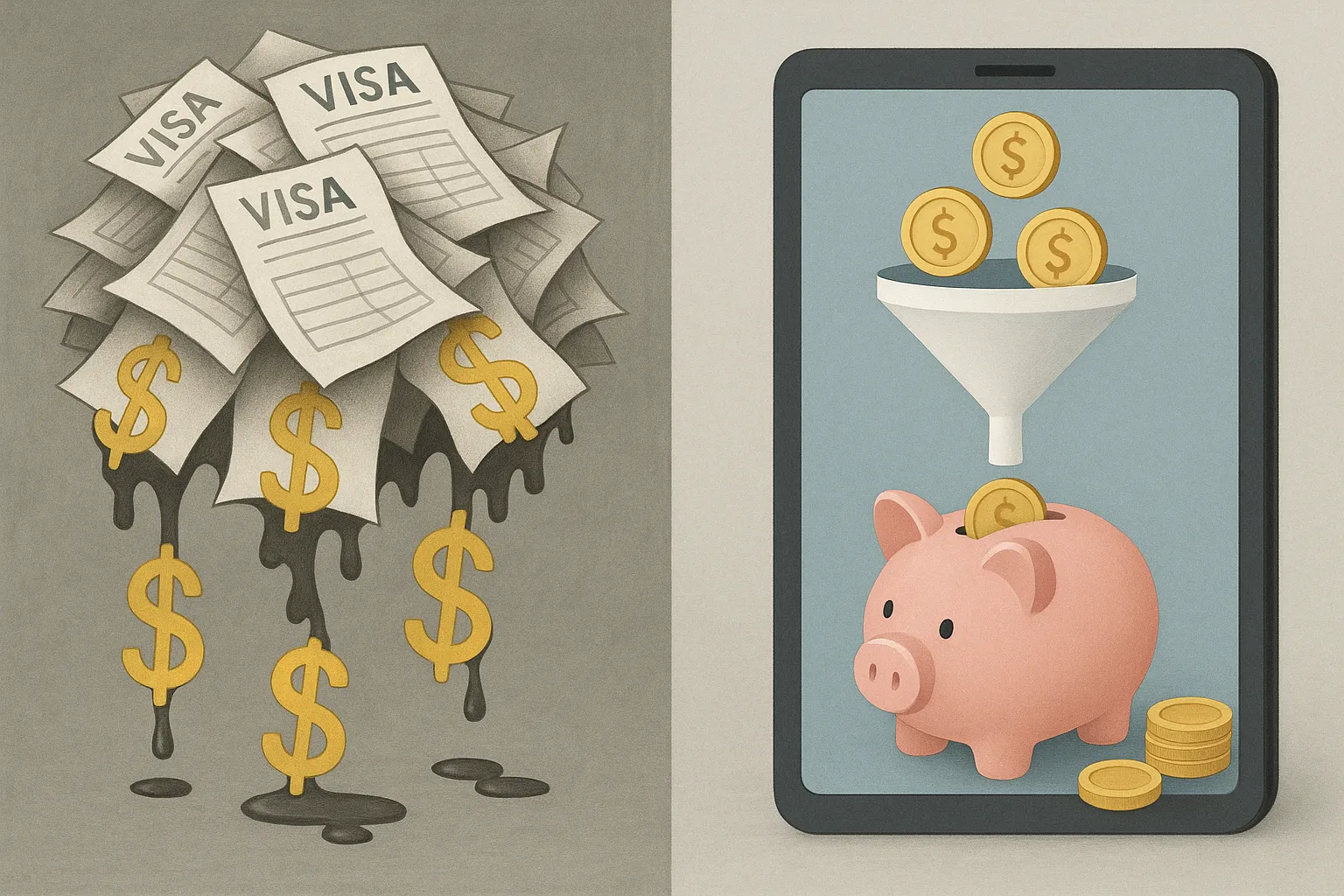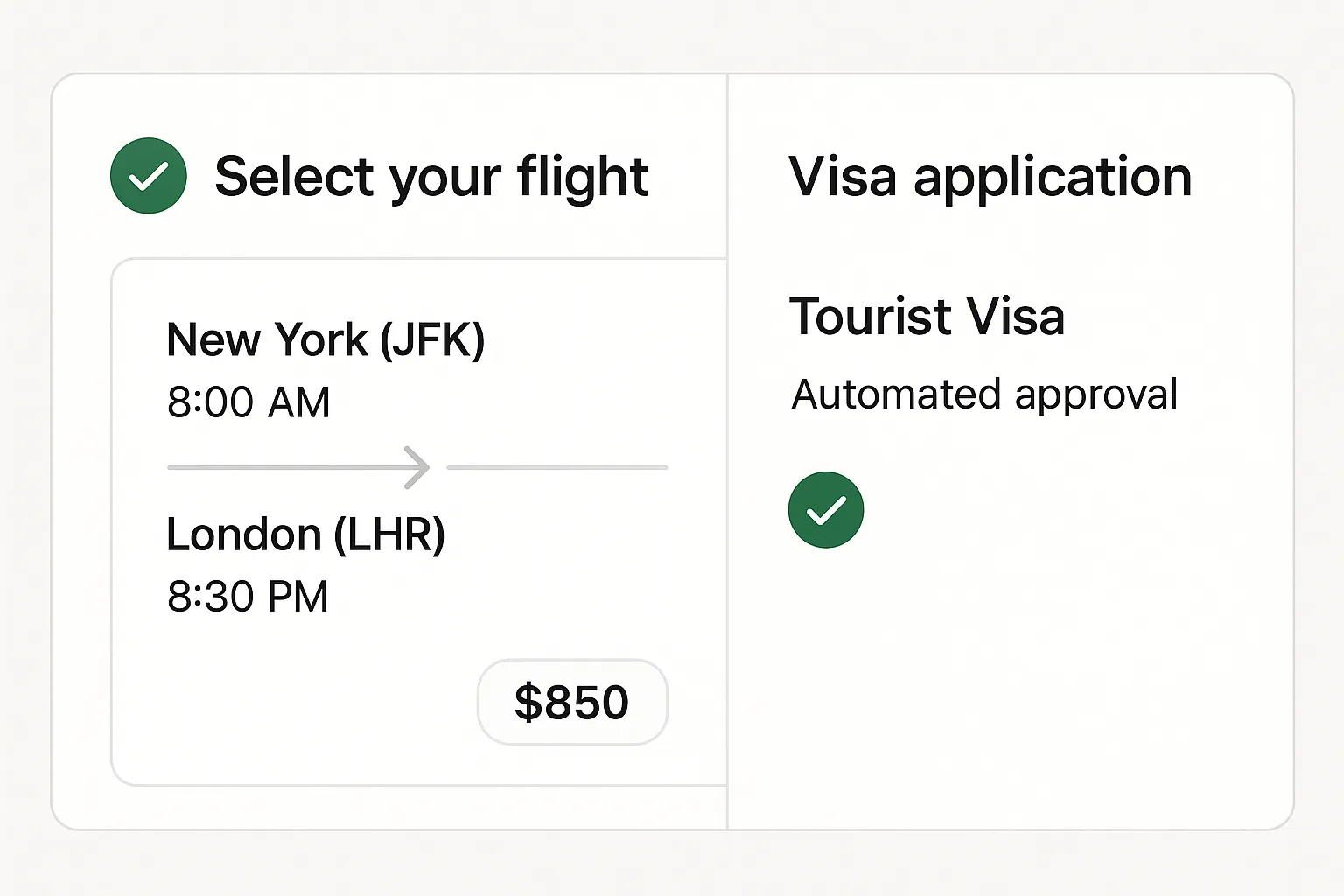The Hidden Costs of Manual Visa Processing (and How to Eliminate Them)

Are manual visa processes quietly devouring your margins?
Stamps, paper forms, last-minute embassy runs—many travel brands still rely on these rituals to get customers across borders. On a balance sheet, manual visa handling often looks like a minor line item (“document fees” or “guest services”). In reality, it is a multi-headed cost center that slows sales, erodes loyalty, and exposes businesses to regulatory risk.
In this article we unpack the hidden costs most finance teams never see, then outline pragmatic steps—drawn from hundreds of integrations—to erase them with digital visa automation.
1. The direct costs you can see… and the ones you don’t
1.1 Staff hours and training
- Specialist labor: A single full-time visa agent can cost US$45 000–60 000 per year in mature markets. Multiply by multiple markets or time zones.
- Training churn: Embassy rules change monthly. Re-training frontline agents typically absorbs 5–10 % of their paid hours, according to an internal survey of three OTAs shared with SimpleVisa.
1.2 Paper, postage, and third-party fees
Couriers, notaries, colour printing, bank drafts—individually trivial, collectively formidable. One boutique tour operator we interviewed spent US$17 on average per passenger just on postage and “official” photos for African visas.
1.3 Error correction
Mistyped passport numbers or expired photos trigger rejections. IATA estimates a single denied boarding can cost an airline US$5 800 in rebooking, accommodation, and compensation.²
Hidden truth: most companies never attribute those disruption costs to the visa workflow, so it stays under the radar of cost-saving initiatives.
2. The invisible drains on revenue
2.1 Booking abandonment caused by uncertainty
Skift Research found that 38 % of leisure travelers abandon a booking once they realize a visa might be required. The cart may look like marketing leakage, but the root is manual, opaque eligibility checks.
2.2 Lost ancillary sales
If a guest must leave your site to figure out border rules, the upsell window for seats, insurance, or tours closes. Internal data from a SimpleVisa client shows a 22 % lift in ancillary conversion when the visa step is embedded in the booking flow.
2.3 Reputation damage
Negative Trustpilot reviews citing “visa chaos” can deter future customers far more effectively than your paid ads can attract them. Reputation loss is rarely assigned a dollar value, yet its lifetime impact is real—and avoidable.

3. Compliance and risk exposure
Manual processes rely on human vigilance. Missing a new health attestation or arrival tax can lead to:
- Airline fines for transporting inadmissible passengers (up to €3 000 per head under the EU carrier sanctions regime).
- Onward liability costs when a customer is refused entry and demands compensation.
- Regulatory scrutiny if customer data is emailed instead of handled through a compliant platform.
A 2024 Deloitte study on travel risk notes that “documentation error is now the single largest driver of carrier fines in the Asia-Pacific region, surpassing overstays.”
4. Calculating your true cost of manual visa processing
Use this back-of-the-napkin formula to surface the expense:
True Cost (per booking) = (Staff cost × processing time) + (physical expenses) + (error rate × disruption cost) + (abandonment loss ÷ completed bookings)
Most partners we audit land between US$12 and US$47 per passenger, well above the few dollars they thought they were spending.
5. Four proven ways to eliminate the drain
5.1 Automate eligibility screening at search
Embed a rules engine that checks passport, destination, and transit points in milliseconds. Customers see “Visa required—easy online application” instead of a vague warning. For an API-first approach, see our deep dive on how eVisa APIs work.
5.2 Offer in-flow visa purchase
A white-label checkout lets travelers complete the application without leaving your site or app. Conversion jumps, and you earn a service fee with zero manual handling.
5.3 Use data services to pre-populate forms
If you already collect passport info for flights or cruises, map it to visa fields to cut applicant keystrokes by up to 70 %. Fewer typos = fewer rejections.
5.4 Centralize compliance logs
A modern visa management platform stores consent, document copies, and status updates in one GDPR-compliant vault, ready for audits or customer queries.
Curious about the underlying tech? Our article on the benefits of electronic visas breaks down security, scalability, and user experience gains.

6. Case snapshot: From 40 minutes to 4
A mid-size Latin American carrier processed visas for its Cuba routes manually. Each application demanded 40 minutes of agent time and produced a 5 % error rate. After integrating an automated eVisa solution:
- Processing time dropped to 4 minutes (90 % self-service by passengers).
- Error-related denied boardings fell to zero in the first quarter.
- Ancillary revenue per passenger rose by US$6.30, offsetting the software subscription within two months.
7. Implementation checklist for 2025 budgets
- Audit current visa workflows and quantify true cost using the formula above.
- Prioritize routes where documentation complexity or rejection risk is highest.
- Select integration mode: API, widget, or no-code portal depending on IT capacity.
- Plan user education—update booking emails, chatbot scripts, and FAQ pages.
- Measure KPIs post-launch: processing time, rejection rate, cart abandonment, ancillary revenue.
Final thought: Visibility is the first step to savings
Manual visa processing may look cheap—until you trace every hidden ripple across operations, revenue, and brand equity. With modern travel API solutions, eliminating those costs is no longer a multi-year IT project; it’s a sprint measured in weeks.
Ready to surface your real numbers and see how much you could save? Our team can run a free comparative audit based on your booking data.
Travel is complicated enough—border paperwork shouldn’t be. Replace the hidden costs with a visible upside.